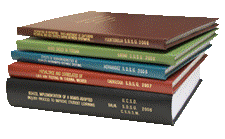Libraries, University of Nebraska-Lincoln

Archival Master’s Theses from the University of Nebraska-Lincoln
Date of this Version
6-1971
Document Type
Thesis
Citation
Thesis (M.S.)—University of Nebraska—Lincoln, 1971. Department of Agricultural Engineering.
Abstract
The need for improved irrigation techniques has become more evident within the last decade. To improve irrigation efficiency and to compete with the more efficient sprinkler irrigation system, surface irrigation has been closely studied. The problems of excessive runoff and deep percolation have been solved by reusing the runoff water and decreasing the irrigation time. Uniformity of water application has been improved by higher flow rates and shorter lengths of run. All of these improvements require additional labor to make them effective. Automation reduces the labor requirement and improves the system efficiency. Automated systems have been developed and are reasonably reliable. Ideas about the design of the system have differed. Some feel that the highest flow possible should be used. Others are inclined to use a flow rate that is inadequate. The object of this study is to determine what size flow rate should be used. The specific purpose is to express this flow rate as function of the basic intake rate of the soil.
Factors affecting soil intake rates were studied in the literature. A field study of the range of possible flow rates was proposed and the study was carried out after two previous irrigations were completed. Flow rates were varied from slightly above basic intake to the maximum allowable non-eroding stream size.
These conclusions were drawn from the study:
-
There was no significant difference in any of the irrigation treatments tested.
-
The lowest stream flow rate, 21 gallons per minute, was equal in performance to the highest flow rate of 41 gallons per minute.
-
The basic water intake rate estimate was within 15% of the average basic intake rate measured in this study.
-
No conclusions can be made on the best flow rate for an entire irrigation season due to lack of data on seasonal variation.
Advisor: Paul E. Fischbach


Comments
Copyright 1971, the author. Used by permission.